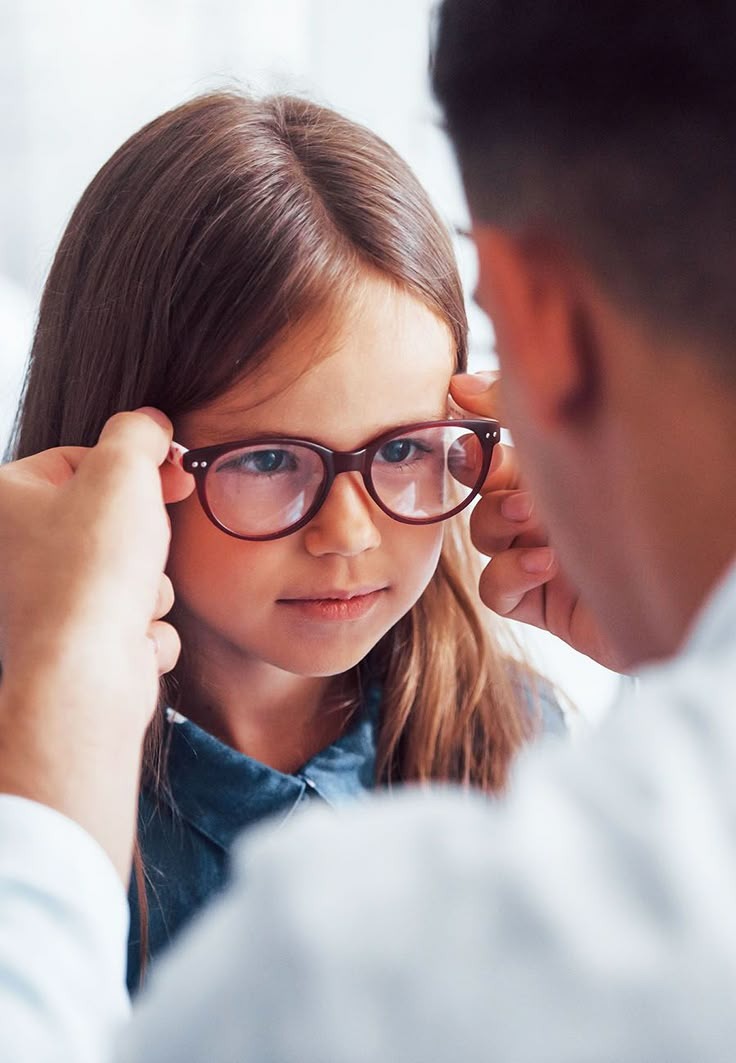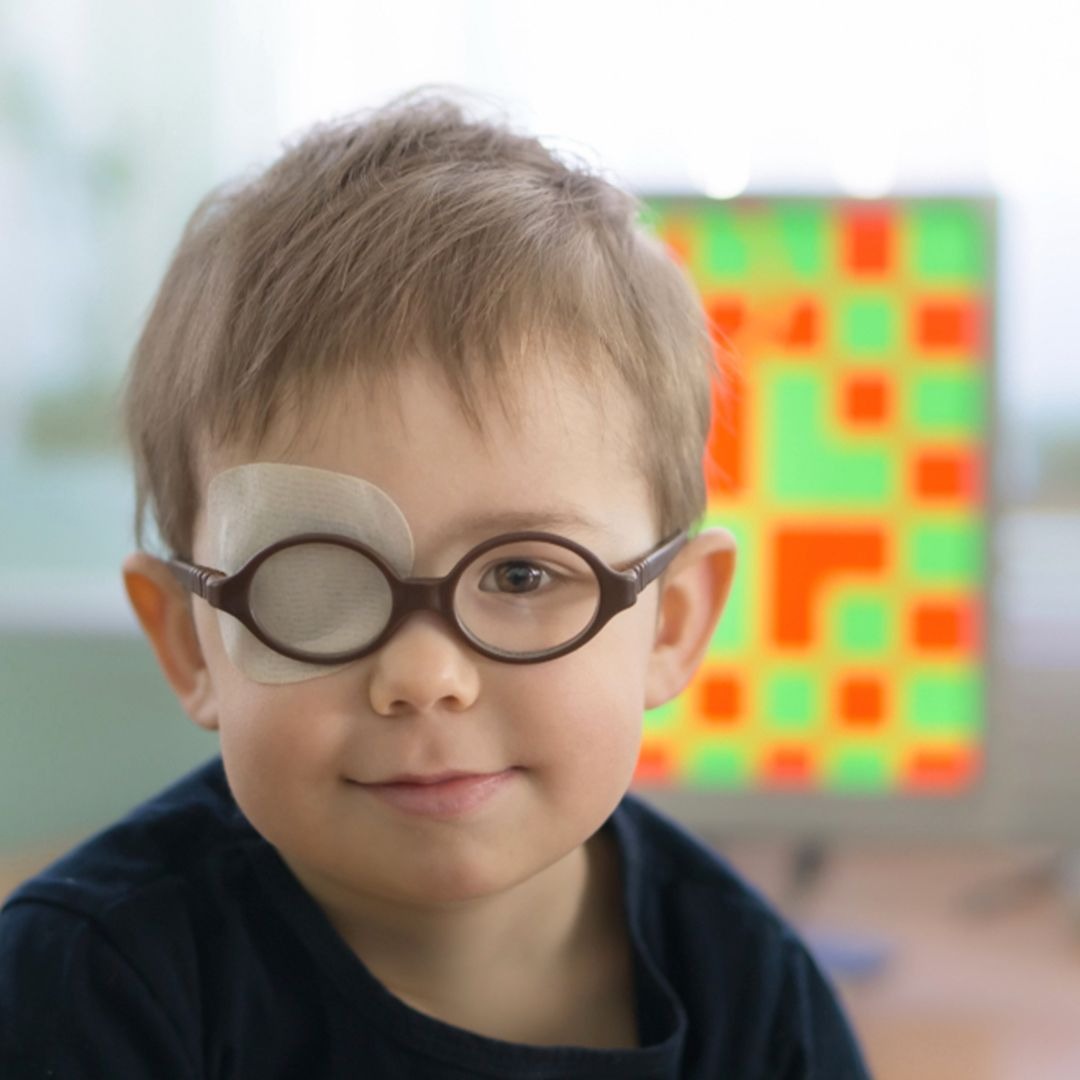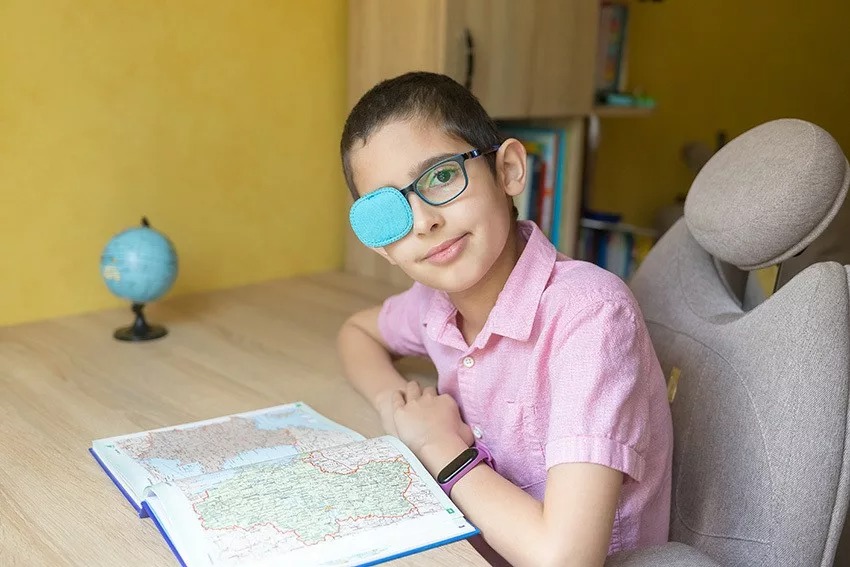Amblyopia Lazy Eye

What Causes Amblyopia?
Amblyopia can occur due to several reasons
- High refractive errors (very strong glasses prescription)
- A significant difference in power between the two eyes
- Eye misalignment (squint/strabismus)
- Visual deprivation during early childhood due to issues like cataract
When the brain doesn’t receive clear signals from an eye during the crucial vision development years, it starts to ignore that eye, leading to amblyopia. Over time, this lack of stimulation causes the neural connections between the weaker eye and the brain to weaken further. As a result, even if the eye itself is structurally normal, it fails to achieve normal visual acuity. If not addressed early, the brain’s suppression of the eye can become permanent, making treatment more difficult later in life.
Is Amblyopia Curable?
Yes, amblyopia is treatable—especially when detected early. The younger the child, the better the results. Generally, treatment is most effective up to 12–15 years of age. However, at Dr. Daljit Singh Eye Hospital, we’ve seen promising improvements even in adults up to 35 years old. With strong motivation and commitment, age is not necessarily a barrier.
How is Amblyopia Treated?
Treatment focuses on correcting the underlying cause and stimulating vision in the weaker eye
- Corrective Measures: Glasses or contact lenses are prescribed to correct high power or unequal power between eyes.
- Patching Therapy: The stronger eye is covered using a patch, encouraging the brain to use the weaker eye.
- Active Vision Therapy: Our center offers advanced exercises and stimulation techniques to actively boost vision recovery.
Are There Any Exercises to Speed Up Vision Recovery?
Yes. Along with patching and vision therapy, engaging in visually demanding activities using the weaker eye can help, such as
- 1.Threading beads
- 2. Coloring detailed drawings
- 3. Playing video games


Is Active Vision Therapy Better Than Patching Alone?
Absolutely. While many centers rely only on patching, we combine it with Active Vision Therapy for significantly better outcomes. Patching alone may lead to limited improvement. Other alternate therapies have not shown consistent success.
My Child Has Both Squint and Amblyopia. What Should Be Treated First?
Amblyopia should always be addressed first before squint surgery. Strengthening the weaker eye improves visual potential and greatly increases the success of the squint correction.
Can Amblyopia Come Back After Treatment?
Yes, there’s a small chance (around 10%) of amblyopia returning even after successful treatment. That’s why regular check-ups and maintenance therapy are crucial to keep vision stable.
What If Amblyopia Is Found Later in Life?
It’s quite common for amblyopia to go unnoticed until teenage or even adulthood, especially when the better eye compensates well. While it becomes harder to treat as one ages, it’s not impossible. Highly motivated patients—even in their 30s—have shown excellent improvement with dedication and proper therapy.
My Child Refuses to Wear the Eye Patch. What Can I Do?
This is a common challenge. Children may feel self-conscious or uncomfortable wearing a patch. You can help by making the experience fun
- Use colorful or cartoon-themed patches
- Create homemade patches and let your child decorate them
- Encourage role-play—let them be a “pirate” for the day!
Start with short periods at home and gradually build up. Involve teachers and caregivers in supporting patching during school hours. While full-time patching is ideal, even 6 hours daily can be effective if done consistently.
If you have questions or need expert guidance on amblyopia, feel free to contact Dr. Daljit Singh Eye Hospital. We’re here to help at every stage of treatment.




